Climate Change in Australia
Climate information, projections, tools and data
Methodology
Climate models used
Global climate model simulations used for these projections come from the international Coupled Model Intercomparison Project phase 5 (CMIP5). A list of the global climate models used in these projections can be found here . In addition, application ready data (projected climate change data applied to observations) have been generated from output of a selection of models from CMIP5 and the Coupled Model Intercomparison Project phase 6 (CMIP6).
Use of downscaling
Model results from CMIP are complemented here with some fine resolution downscaled data. Two main sets of downscaling (one statistical and one dynamical) results are used. The downscaled data do not play a major role in these projections, with their role confined to the assessment of confidence in the global climate model-based projections (Technical Report Section 7.2), and as sources for application ready data (projected climate change data applied to observations) in some circumstances where the added value was clearly established (Technical Report Section 6.3.2). This site contains more information on the use of downscaling in these projections and on downscaling in general. Downscaling will feature more prominently in the next generation of national climate projections for Australia
Model evaluation and model selection
The CMIP models were assessed as to how well they simulated aspects of current climate (Technical Report Chapter 5). Although models varied considerably in their skill, no subset of climate models performed well across all metrics and there was not a strong link between model evaluation results and projected changes (Technical Report Chapter 6). Consequently, a skill-based weighting was not applied and all available simulations were considered in preparing quantitative ranges of projected change. However, model evaluation results were used in informing selection of individual models for the development of application-ready data sets (see below).
GREENHOUSE GAS SCENARIOS
Projected changes and CMIP5 application-ready data are given for a range of greenhouse gas emission scenarios defined by the Representative Concentration Pathways (RCPs) used by the Intergovernmental Panel on Climate Change (IPCC) Fifth Assessment Report (IPCC, 2013). These scenarios range from RCP2.6 with low emissions and ambitious and sustained global emissions reduction, to RCP8.5, a high-emission scenario with ongoing increase in emissions beyond the 21st century.
In addition, CMIP6 application-ready data are given for a selection of emission scenarios defined by the Shared Socioeconomic Pathways (SSPs) used by the IPCC Sixth Assessment Report (IPCC, 2021) (see below). These scenarios range from SSP1-2.6, under which there is an immediate reduction in emissions, to SSP5-8.5, under which emissions rise to roughly double present levels by 2050 and continue to rise thereafter until near the end of the 21st century.
Calculating projected ranges of change relative to a reference baseline
Projected changes are calculated based on area-averaged data for each of four super-clusters, eight clusters, and fifteen sub-clusters covering the entire nation. These projections are presented as ranges of change for different 20-year time periods in the future with respect to the reference period (1986-2005). Generally, the 10th to 90th percentile range of the distribution of CMIP5 global climate model results is used to characterise the projections (Technical Report Section 6.2.2). In addition to model ranges, changes for individual models are also available on the website. Time series charts of simulated climate change (1901 to 2099) against a longer baseline (1950-2005) are also presented within this work to illustrate the interplay between the slowly emerging climate change signal and natural internal variability.
Key messages and confidence
Projections presented on this site include summary key messages and associated confidence statements. These are based on the projected ranges of changes from the new generation climate models, but also include additional lines of evidence such as physical theory, understanding of processes driving the projected change, climate model agreement, model evaluation and consistency of global climate model results with downscaled (or high/fine resolution) simulations. Our approach to assigning confidence is similar to that of the IPCC and is explained further in Section 6.4 of the Technical Report. Examples of the synthesis of different lines of evidence in assigning confidence may be found in the projections sections of the Technical and Cluster Reports .
Variables
A list of climate variables available from this website can be found here . For some variables, selected measures of frequency or intensity of extremes are included as well as mean conditions. A range of products is available for most of the variables. However, in some cases only qualitative information (e.g. direction of change) is highlighted, as confidence in the reliability of quantitative information from the climate models was low.
APPLICATION-READY DATA
Some applications require detailed projections data as input to further analyses or modelling to explore the impact of particular future climate scenarios in detail. In many cases, global climate model outputs can’t be used directly for this purpose because they lack spatial detail and are ‘biased’ relative to observations. This website provides locally-relevant, unbiased application-ready future climate data that has been created by modifying observed data using climate changes simulated by global climate models. The methods used to do this are described here.
A sample of eight CMIP5 models, from a total of 40, has been selected for the provision of application-ready data, ensuring that the range of change in the smaller sample is representative of the broader range of results for Australia, while also considering model skill and model genealogy. The method used for selection of these models is described in Chapter 9 of the Technical Report and here.
Nine CMIP6 models, from a total of ~50, have also been selected for the provision of application-ready data. The selection of these models considered the extent to which the range of change in the sample is representative of the broader range of CMIP6 results for Australia, model skill and model genealogy. However, unlike the eight models selected for CMIP5, the nine models selected for CMIP6 were selected based on the suitability of their outputs as inputs to an ensemble of dynamical downscaling simulations. This means additional criteria were incorporated in the model selection. In addition, a full analysis of the extent to which the nine models represent the range of uncertainty in changes in all key climate variables in different regions of Australia has not yet been undertaken. Nonetheless, the model selection samples much of the CMIP6 ranges of change in annual mean temperature and rainfall for a selection of Australian regions (see Grose et al 2023). The method used for selection of the CMIP6 models is described here.
Page updated 19th May 2025



